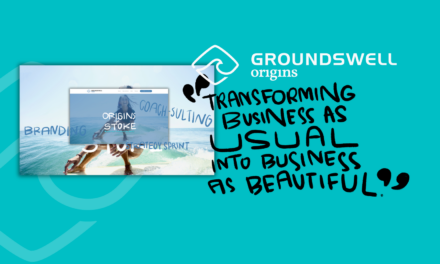There is no denying that social media has profoundly changed the way people communicate with family and friends and the way businesses interact with customers–as well as prospective clients. What you may not have noticed is the way that the increasing popularity of social networks as a gateway to the wider web has changed online video and the way we consume it.
According to the Pew Research Center’s Pew Internet Project report, “Online Video 2013,” “Since 2006, the percent of online adults who use video-sharing sites has grown from 33% to the current figure of 72%.” In addition, “71% of adults who post videos online do so on social networking sites,” and “58% of adults who watch online videos do so on social networking sites.”
Predictably, the increase in web users who are watching video on social media sites has an effect on the video itself. According to Business Insider’s “The Rise of Social Video: How Social Media Is Creating New Winners in Online Video,” social video is having a dramatic impact on online video as a whole. To start with, the article states, “Video length is shrinking, in part to accommodate the preferences of social media audiences who like to snack on video.” For Peter Hawley, chair of film and broadcast at Tribeca Flashpoint Academy in Chicago, this can be a good thing. He says he feels the most impactful videos these days are short. “It has to be short-the shorter the better-and hard hitting,” says Hawley, stressing that the video also needs to be “easily shareable.”
Troy Dreier, senior associate editor of StreamingMedia.com, agrees (sort of). He says, “I still tend to think that shorter is better, but certainly the average length of online videos is expanding, and viewers have shown they are not afraid of longer videos. So I think the rule of thumb now is-be as long as you need to be but don’t be any longer.”
Of course, length can also depend on the platform one is working with, notes Dreier. “I think if you are working exclusively in Vine or Instagram, then you’re limited to being shorter [6 seconds for Vine and 15 seconds for Instagram Video], and those have been popular with a lot of brands. As for creating a post on your own sites or a post on YouTube-I think the feeling now is be what you need to be; people are willing to watch longer video if it’s good,” he says.
According to the previously mentioned Business Insider article, social media platforms such as YouTube, Facebook, and Vine will be where an increasing majority of consumers discover and watch TV content and video; additionally, it is predicted that online video audiences will double in 2016, with a global audience totaling about 1.5 billion.
Avi Levine, executive director of the Digital Professional Institute-a division of the digital media arts school Tribeca Flashpoint Academy-explains that the “explosion” of social networking sites focusing on video has been a game changer for the industry. “Social media has kind of changed the way that we consume content, from our friends and now from brands,” says Levine, who adds that when we get information from our newsfeeds, we often end up with a variety of stories that are not related to each other. “So it’s not like you’re reading a narrative or chronological story of posts in your Facebook newsfeed or Instagram pictures that link one to another-they’re bite-sized chunks. So video has responded to that-or, really, these mediums have created opportunities for video to respond in the same way.”
Dreier notes that many brands are “really taking advantage of new platforms as soon as they come out.” He explains, “There’s kind of a rush to see who can be the most creative in using a new platform. Vine and Instagram Video are a great example of that.”
For example, Dreier notes that a recent Lowe’s campaign on Vine-Fix in Six-is “one of the smartest video campaigns I have ever seen.” He explains that Lowe’s-the home improvement store-has created a series of short Vine videos in a “really colorful, whimsical style.” The company picks a topic and makes short, stop-motion films filled with tips for home improvement, organization, and more with nothing more than an iPhone for equipment. “They’ve gotten tens of thousands of followers for it, and it’s a really successful way of using the medium,” says Dreier.
Levine points out that content producers also need to keep in mind that “multiple screens [can] mean shorter attention per screen.” This is something that the creators of Vine and Instagram Video know well-as both platforms are primarily for mobile users. But with the barrier to entry so low for brands and individuals interested in creating online video, it becomes more important than ever to craft quality stories to capture you audience’s interest.
Levine underscores the connection between telling a good story and having a successful video. “You can tell the story in 6 seconds; you can tell the story in 3 hours, but the story that you tell that will resonate the most is the story that is delivered in a way that people want to consume it,” he says. “And so the stories that are being told on some of these social media networks are shorter, but the most impactful ones … will focus on the story and the message rather than the length of the video.”
Whether it’s on Vine, Facebook, or YouTube, social media platforms have the power to bring your video to wider audiences than almost any other medium. Lest brands doubt how much mastering online video can impact business, the “Social Video Report”-produced jointly by Visibility IQ and Entertainment Media Research-details important news: “Almost six in ten internet users have gone on to purchase an item after seeing it in an online video. …” With those kinds of numbers in online video’s corner, brands ignore the power of social video at their own peril.






